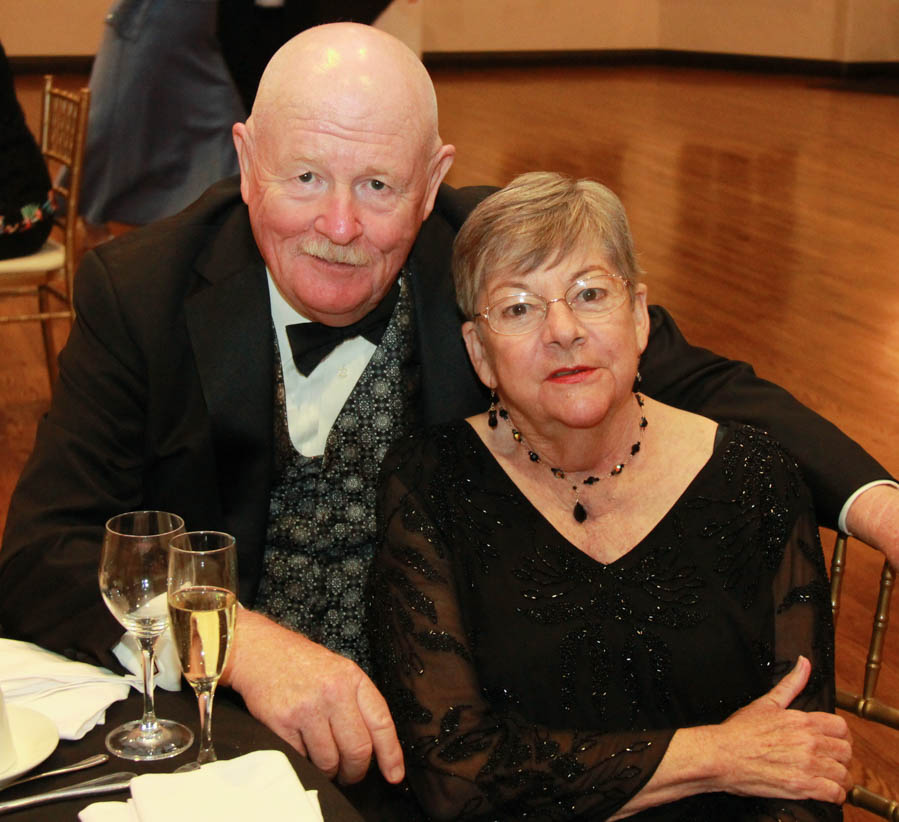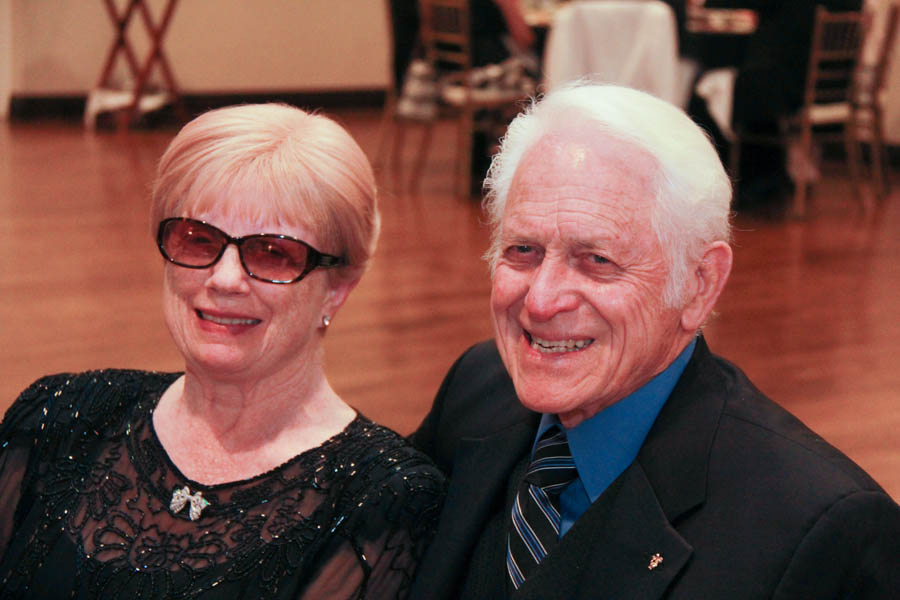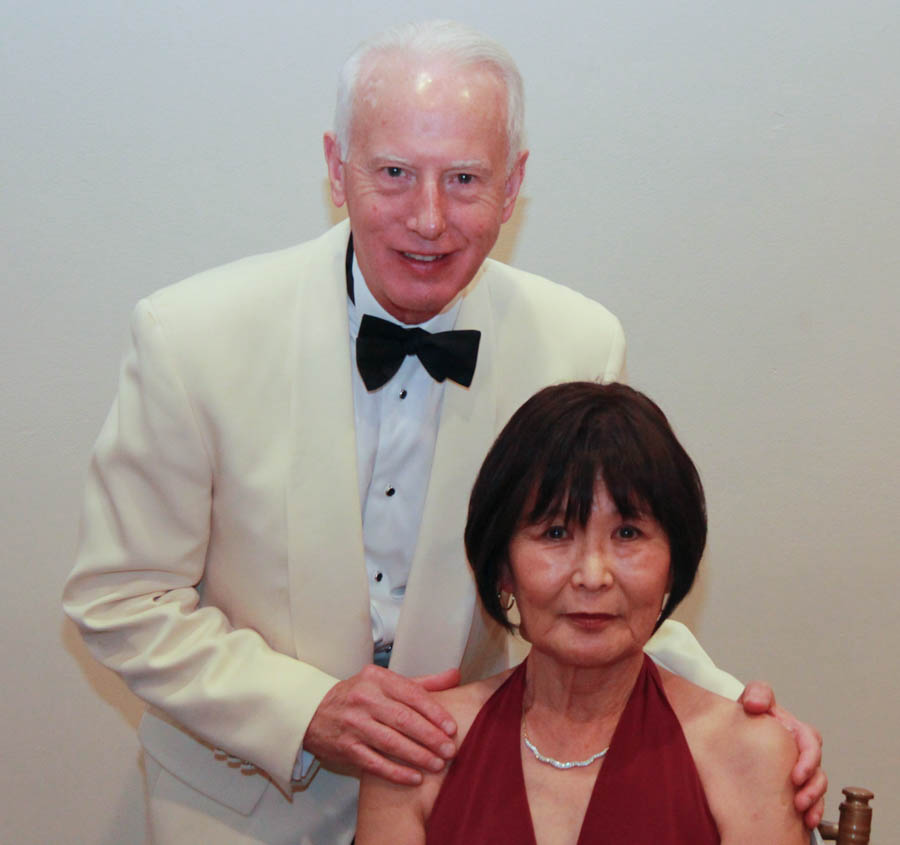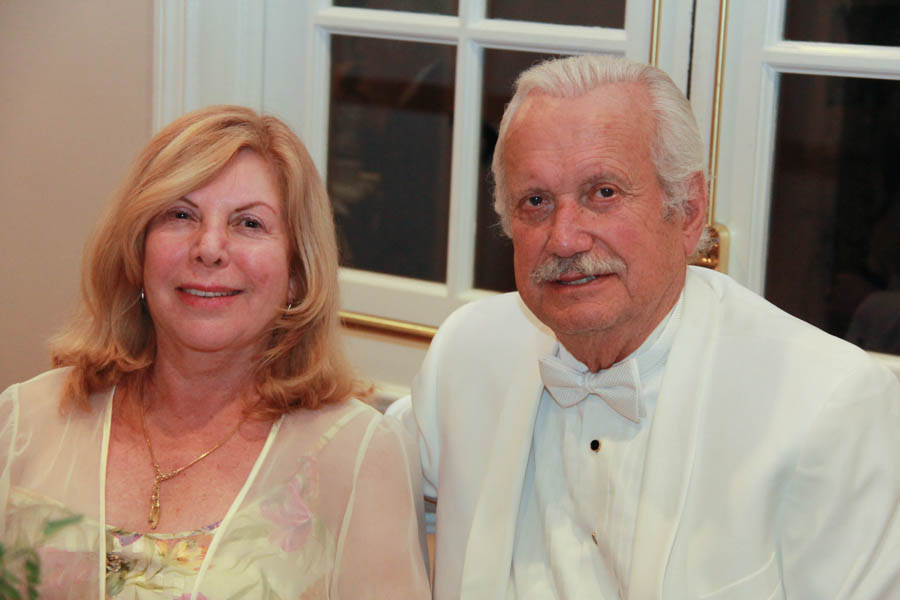Who Was Here This Evening? (Page Two)
|
|
Theme: 70th Anniversary Ball
Page 1 - Meet and Greet | Page 2 - Who Was Here? Page 3 - Serious Dancing |
|


Click for the full sized image (3600 x 2400 pixels)
 |
|
Hurry Back... We miss you!

Did You Know? - Wartime production during World War II required vast amounts of cotton, silk, nylon, wool, leather, and rubber. In 1942, the United States War Production Board issued Regulation L-85, cutting the use of natural fibers in clothing and mandating a 10% reduction in the amount of fabric in women's beachwear. To comply with the regulations, swimsuit manufacturers produced two-piece suits with bare midriffs. The fabric shortage continued for some time after the end of the war.
Women's swimwear of the 1930s and 1940s incorporated increasing degrees of midriff exposure. Teen magazines of late 1940s and 1950s featured similar designs of midriff-baring suits and tops. However, midriff fashion was stated as only for beaches and informal events and considered indecent to be worn in public.

Bill and Darleen Scalzo

Solange and Benoit
Beaulieu

Guests Mimi and Robert Bolton

Paul and Sue Liles

Did You Know? - A transistor is a semiconductor device used to amplify or switch electronic signals and electrical power. It is composed of semiconductor material usually with at least three terminals for connection to an external circuit. A voltage or current applied to one pair of the transistor's terminals controls the current through another pair of terminals. Because the controlled (output) power can be higher than the controlling (input) power, a transistor can amplify a signal. Today, some transistors are packaged individually, but many more are found embedded in integrated circuits.
The transistor is the fundamental building block of modern electronic devices, and is ubiquitous in modern electronic systems. Julius Edgar Lilienfeld patented a field-effect transistor in 1926 but it was not possible to actually construct a working device at that time. The first practically implemented device was a point-contact transistor invented in 1947 by American physicists John Bardeen, Walter Brattain, and William Shockley.

Michael and Linda Pan

Tom and Nancy Cuda

China and Cliff Scott

Did You Know? - On May 29, 1947, the armed forces radio station in Tokyo, WVTR, interrupted its evening broadcast of dance music with a disturbing news bulletin: a 20-foot sea monster had emerged from the waters of Tokyo Bay and was making its way inland. The entire region was said to have been thrown into chaos.
For the next hour, a series of bulletins updated listeners on the progress of the "dragon" as it proceeded downtown, derailing trains and smashing buildings.
Troops were said to be battling it, although bullets were useless against it. So instead soldiers were using flamethrowers, grenades, teargas, and phosphorous bombs.
Listeners were advised to barricade themselves indoors and to keep phone lines clear for emergency calls.
One listener later recalled that the reports "continued at a frantic pace, included harrowing rescues and escapes, remote radio links, movement of Heavy Weapons and Tanks and all of the stuff of which the truly epic stories are made. Accompanied by the terrifying screams, roars and shrieks of both the beast and the panic stricken populace. As well as the gun fire and bullhorns of the protectors."
Finally, the monster reached downtown Tokyo. An announcer, identified as Cpl. Jim Carnahan of Chicago, who was providing a play-by-play account of the battle, then told listeners he would "draw nearer the beast."
He did so, at which point the monster stopped, turned, and addressed the listeners in a soprano voice. It said that it wished to congratulate the Armed Forces Radio Station on its fifth anniversary.
The hour-long broadcast was intended as a joke in honor of the station's fifth anniversary, but this was lost on many of the listeners who took it seriously. In fact, the broadcast caused widespread panic.

The Clancy

Jerry and Clancy Zerg

Andrea and Bernard White

Paul and June Pitman

Jean and Angela Blondeau

Did You Know? - Kon-Tiki left Callao, Peru, on the afternoon of April 28, 1947. To avoid coastal traffic it was initially towed 80 km (50 mi) out by the Fleet Tug Guardian Rios of the Peruvian Navy, then sailed roughly west carried along on the Humboldt Current.[12]
The crew's first sight of land was the atoll of Puka-Puka on July 30. On August 4, the 97th day after departure, Kon-Tiki reached the Angatau atoll. The crew made brief contact with the inhabitants of Angatau Island, but were unable to land safely. Calculations made by Heyerdahl before the trip had indicated that 97 days was the minimum amount of time required to reach the Tuamotu islands, so the encounter with Angatau showed that they had made good time.
On August 7, the voyage came to an end when the raft struck a reef and was eventually beached on an uninhabited islet off Raroia atoll in the Tuamotu group. The team had travelled a distance of around 6,980 km (4,340 mi; 3,770 nmi) in 101 days, at an average speed of 1.5 knots (2.8 km/h; 1.7 mph).
After spending a number of days alone on the tiny islet, the crew was greeted by men from a village on a nearby island who arrived in canoes, having seen washed-up flotsam from the raft. The crew were taken back to the native village, where they were feted with traditional dances and other festivities.

Penny and Larry Guentherman

Nancy and Ludwig Franes

Nancy flashes that famous smile!

Charles Jurai and Marcia Fiorindo

Dotti and Bruce Acker

Did You Know? - The Indian Independence Act 1947 is an Act of the Parliament of the United Kingdom that partitioned British India into the two new independent dominions of India and Pakistan. The Act received the royal assent on 18 July 1947, and Pakistan came into being on 15 August at the same time as Indian independence. However, due to viceroy Lord Mountbatten's need to be in New Delhi for the transfer of power, Pakistan celebrated its formation a day ahead on 14 August 1947 to enable him to attend both events.

James Mramor
And Edie Askew

James shows us his cuff-links
Did You Know? - The national flag of Slovenia features three equal horizontal bands of white (top), blue, and red, with the Slovenian coat of arms located in the upper hoist side of the flag centered in the white and blue bands. The coat of arms is a shield with the image of Mount Triglav, Slovenia's highest peak, in white against a blue background at the centre; beneath it are two wavy blue lines representing the Adriatic Sea and local rivers, and above it are three six-pointed golden stars arranged in an inverted triangle which are taken from the coat of arms of the Counts of Celje, the great Slovenian dynastic house of the late 14th and early 15th centuries.

Chuck and Susan Johnson

Guests Victor Lee and
Debbie Ku

Ready to dance! Please come back!

Clay Larson and Judy Hoewisch

Did You Know? - On Nov. 29, 1947, the United Nations General Assembly passed a resolution calling for Palestine to be partitioned between Arabs and Jews, allowing for the formation of the Jewish state of Israel.
Since 1917, Palestine had been under the control of Britain, which supported the creation of a Jewish state in the holy land. Sympathy for the Jewish cause grew during the genocide of European Jews during the Holocaust. In 1946, the Palestine issue was brought before the newly created United Nations, which drafted a partition plan.
The plan, which organized Palestine into three Jewish sections, four Arab sections and the internationally-administered city of Jerusalem, had strong support in Western nations as well as the Soviet Union. It was opposed by Arab nations.
|
|
Theme: 70th Anniversary Ball
Page 1 - Meet and Greet | Page 2 - Who Was Here? Page 3 - Serious Dancing |
|

